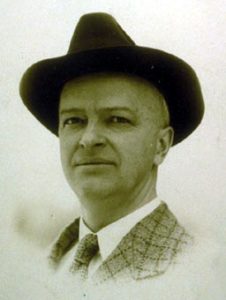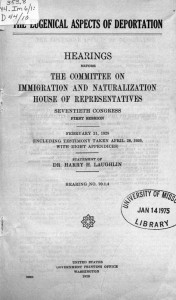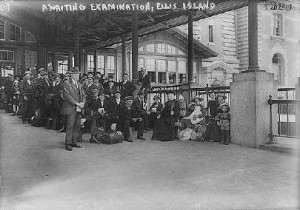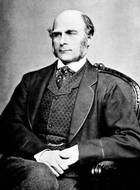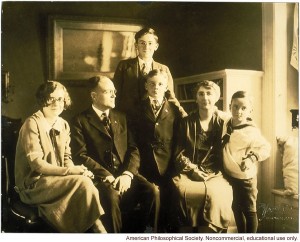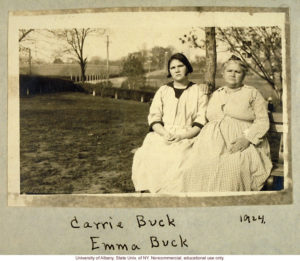
Carrie Buck and Emma Buck, 1924, courtesy of the University of Albany, New York
As eugenics became more popular (see last post), sterilization laws were adopted in many states. One of the most notorious and tragic cases involving forced sterilization was Carrie Buck’s. In 1927, Buck was the first person to be sterilized under Virginia’s 1924 law. She had had an illegitimate daughter, and at 17 years old, joined her own mother at the Virginia Colony for Epileptics and Feebleminded. Both were considered feeble-minded and promiscuous, and Carrie’s daugher, Vivian, also received the feeble-minded diagnosis. Carrie’s mother had been involuntarily institutionalized, but Carrie was additionally involuntarily sterilized. Writing for the majority, U.S. Supreme Court Justice Oliver Wendell Holmes declared that “. . . Three generations of imbeciles are enough.”
Even though sterilization was legal, Carrie’s diagnosis made no sense. She had done well at school, and her daughter made the honor roll in elementary school, several years later. Obviously, neither of these females was feeble-minded. However, Carrie had been raped by a member of her foster family, and apparently they (with her defense lawyer and the lawyer for the Virginia Colony ) conspired to send her to an institution to help the family avoid shame and to test the state’s sterilization law.
Over the years, institutionalization had been used as a tool by many families to cover up or hide problems in both male and female members, and this classic miscarriage of justice was just one of many instances of its misuse. Carrie’s younger sister was also sterilized after being told she was going to the hospital for appendicitis surgery.

Supreme Court Justice Oliver Wendell Holmes, Jr. kn Buck v. Bell, courtesy Library of Congress

Virginia State Epileptic Colony Cottage for Feeble-Minded Women
______________________________________________________________________________________
